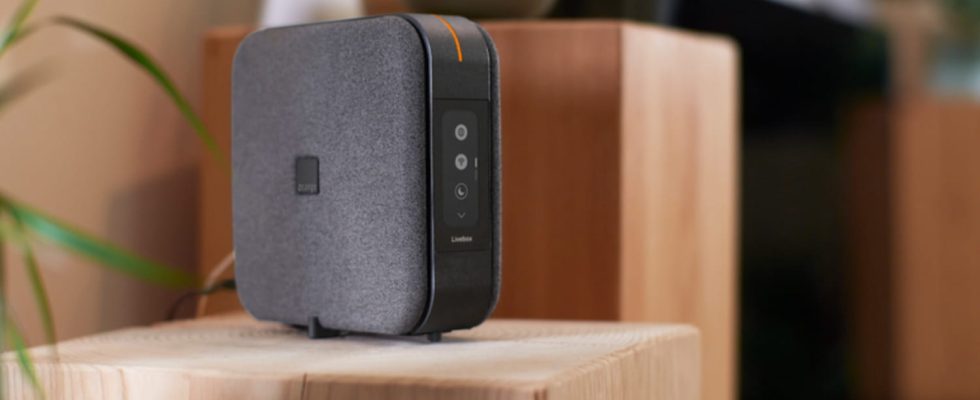Have you installed your Internet box near your television, or even in the TV cabinet? A practical and aesthetic place a priori, but which is absolutely not ideal for your Wi-Fi network and the connection of your other devices.
Like many people, you probably have fixed access to the Internet at your home: an unlimited and permanent connection which goes through a box provided by your operator. And if you watch TV or video streaming services, you probably have this precious box in your living room, right next to your TV. A location which seems “natural” and logical, but which is not the best… and which can even prove counterproductive by causing connection and flow problems, in particular with the older, most widespread models, especially if you have hidden your box in a TV cabinet!
In fact, whatever its name (Livebox, Bbox, Freebox, SFR Box, etc.), an Internet box is in reality a modem-router – its real “technical” name. In other words, a device that fulfills two functions: the modem part ensures the connection to the Internet, fiber or ADSL while the router part is responsible for connecting all the devices that you connect to the network, in wired mode (with cables). Ethernet) or wireless (Wi-Fi). And it is the combination of these two roles that allows you to share your Internet connection between your computers, smartphones, tablets, televisions and other connected objects in your home.
However, if Ethernet connections do not pose any problems other than the passage of cables, not always simple or graceful – “What are these naughty sons?” –, Wi-Fi is much more capricious. Indeed, this mode of communication is based on radio waves which are very sensitive to the environment in which they propagate. And, according to the immutable laws of physics, these invisible signals have many “enemies” that harm their performance and therefore the quality of the Internet connection.
Internet box: avoid obstacles and anything that disrupts the waves
Thus, Wi-Fi waves are poorly diffused through thick walls, whether stone, concrete or brick, which absorb them without returning them. They also don’t like ceramics (tiles), water (aquariums, for example) and hate the obstacles they find in their path (furniture and humans) as well as all metal bodies, including thin layers of metal used in mirrors and some windows. And they do not mix well with domestic appliances that emit waves or radiation: microwave ovens, washing machines, dishwashers, induction hobs, but also hi-fi amplifiers or home cinema, unshielded speakers, Bluetooth devices, baby monitors or cordless phones (Dect). And more generally, anything that generates an electromagnetic field, such as lamps or power supplies. This is why your television – which itself contains a metal frame, a power supply and numerous electronic components and which is certainly surrounded by this type of wave-disrupting objects – is not the ideal neighbor of your Internet box. Even more so if you locked it in a piece of furniture!
It is therefore in your best interest to move your box away from the screen to avoid Wi-Fi disruption in your home, preferably using an Ethernet cable to connect it to the TV decoder that accompanies it. And even if you prefer to connect your television connected to your box via Wi-Fi, it is better to separate them by a meter or two so that the waves are fully diffused. Ideally, an Internet box (or a Wi-Fi router) should be installed in a “neutral” and open place, in the center of the home, in order to best serve all the rooms, the waves attenuating with distance . It must also be placed at a height, more than 1 m from the ground, and without obstacles nearby: it must therefore not be placed directly on the floor, glued to a concrete or stone wall, and even less so. lock it in any piece of furniture – even if “it’s prettier”“! – not to mention that it risks heating up and breaking down…
The problem does not arise in the same terms with the latest generation Internet boxes which use Wi-Fi 6E, a recent standard which offers excellent performance, particularly for indoor coverage. If you can’t have one – the subscription is more expensive than with other models – you can always extend your box’s Wi-Fi network using a repeater. And if you have the means, you can invest in a standalone Wi-Fi router, or a Mesh-type mesh system with satellites, which will replace the Wi-Fi in your box by offering better coverage with higher speeds.
